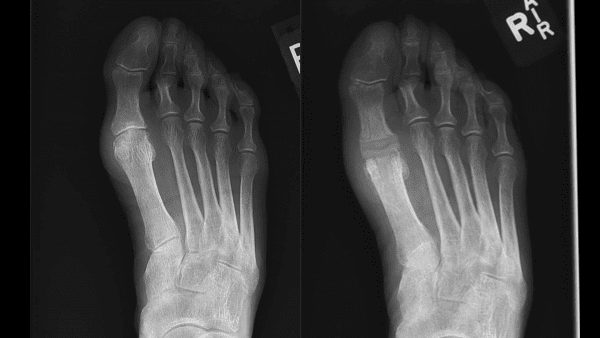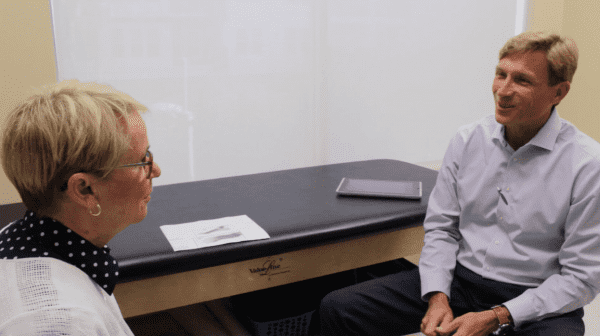Walk a Mile in Her Shoes: Toe Joint Excision and Implant Surgery Testimonial
- What is Toe Joint Excision and Implant Surgery?
- What is the Recovery Process Following Toe Joint Excision and Implant Surgery?
According to the American Orthopaedic Foot and Ankle Society, arthritis of the big toe is the most frequent arthritic ailment of the foot and follows only bunions as the most common condition affecting the big toe.
For years, Susan had tremendous difficulty walking and suffered significant pain when she needed to get around. To relieve her discomfort, she sought the advice of Joseph Funk, D.P.M., a board-certified foot and reconstructive rearfoot/ankle surgeon at Orlando Orthopaedic Center.
“Dr. Funk and his team were wonderful and helped me with my foot problem,” says Susan. “The service was fantastic; the professionalism was even better. The biggest benefit is being able to wear any shoe I want [without pain].”
Severe arthritis of the big toe can impair big toe mobility and hinder walking and other routine activities involving the foot. When conservative treatment methods such as specialized shoes, pain medication and physical therapy have failed to resolve the problem, surgery is recommended as a last resort.
“I suffered for many years,” says Susan. “Before I had the surgery, I was having a lot of problems walking because of where my shoes would hit the bone. Now, I no longer have that.
Dr. Funk took care of the whole thing. I was extremely happy, (it was) very successful.”
What is Toe Joint Excision and Implant Surgery?

X-rays of Susan’s foot before and after surgery.
The objective of toe joint excision and implant surgery is to alleviate pain and to restore normal function and motion to the big toe.
The procedure involves removing part of the joint and replacing it with a metal or plastic implant.
During outpatient surgery, a small incision is made around the big toe joint and unhealthy joint surfaces and bone spurs are shaved off and cleared away. The spaces between the big toe joint are opened slightly and the implant inserted inside to stabilize it. The surgeon then closes the wound with stitches.
“Dr. Funk drew me pictures of my foot and the surgery went just like the pictures,” says Susan.
Susan appreciated the high level of care she received at the Orlando Orthopaedic Outpatient Surgery Center. “I enjoyed going to the surgery center because once I got there, the people just take care of you completely,” says Susan. “You have somebody with you at all times.”
Susan was also impressed by Dr. Funk’s interpersonal skills. “Dr. Funk, besides having a wonderful personality, is fun and very personable,” she says. “He gives you a great deal of confidence in what you’re about to do.”
Recovery Following Toe Joint Excision and Implant Surgery

Susan with Dr. Funk.
Following surgery, the big toe joint will be immobilized in order to heal. However, gentle range of motion exercises are normally prescribed to inhibit the joint from becoming stiff and rigid. Physical therapy may be recommended to strengthen the joint and restore flexibility.
Stitches are normally taken out after about two weeks and resumption of weight bearing activities will depend on each patient’s unique circumstances and medical history. Most patients are able to resume light walking within a few weeks post-surgery.
Having a strong support system immediately following surgery plays an important role in the recovery process. Susan appreciated the extra care shown to her by Orlando Orthopaedic Center staff after she returned home.
“The care was fantastic, the follow-up was fantastic. They called to check on me,” says Susan. “Those are the things that are important to give you confidence anytime you face surgery.”
After a successful toe joint excision surgery, Susan is thrilled to be walking again pain-free and is extremely thankful to Dr. Funk.
“I would highly recommend Dr. Funk, his whole team, and the people in the surgery center,” she says. “This is a great place to come. I have every confidence. I thank them all for their wonderful service and the care they have given me.”


